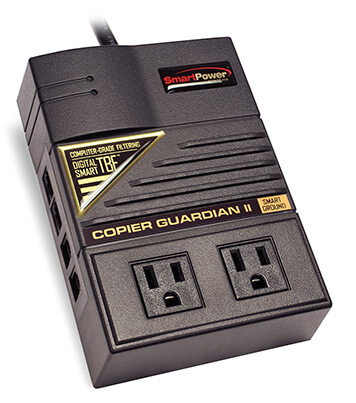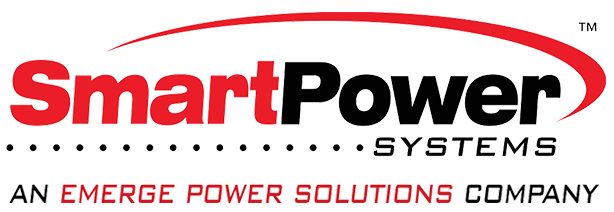 Experienced document-management resellers utilize electronic power conditioning to resolve unexplained system crashes.
Experienced document-management resellers utilize electronic power conditioning to resolve unexplained system crashes.
An insidious threat is putting managed print systems at risk. This fatal flaw in the installation of multi-function peripherals takes hundreds down each day across the country, creating serious problems for countless businesses that rely on their printers, scanners and fax machines. Surprisingly, this flaw comes from the least expected source: the wall socket.
Many resellers and service providers today still do not acknowledge or accept the extent of the vulnerability of managed print systems caused by poor power quality.
For an issue that has such a significant impact on the overall functionality and uptime of a customer’s business – and the reputation of the reseller that specifies and installs the system – the cautionary tale of “dirty power” seems to resonate most with those longstanding OEMs and dealers that have learned the lesson the hard way. Those that have, including many that service the largest, national-brand accounts, make including proper power conditioning in each managed print system they sell a mandate, not an option.
“We’ve expanded our Sharp Direct operations to where we service several thousand machines, and every one has a power conditioner − it is mandatory right out of the gate,” says Anthony LoGiudice, Vice President, Service and Operations, Customer Solutions Group, Sharp Electronics of Canada LTD. “If the power conditioner eliminates just one service call in a twelve month period, it already paid for itself in the first year. That’s a huge ROI right there.”
Prevention, more important than ever
With today’s reliance on digital technology for document management, any hiccup in the system can affect productivity within an entire office environment, as multi-function peripherals now fall under the domain of IT since they serve organizational and archival purposes as well as printing.
“Previously, when analog copiers were stand-a-lone products and contained very little digital circuitry, their performance was not affected much by dirty power. Approximately sixteen years ago when digital copiers started to come into the marketplace, they started to be connected to office networks.” recalls LoGiudice. “Since then, the ‘attachment rate’ of copiers has gone up dramatically. Most copiers are now digital and connected to a network, so a lot more things are in play. That makes it much more sensitive to electrical noise. Any spike or surge can cause image quality issues or corrupt functions such as scanning, faxing and document filing.”
Not only do such disruptions lead to logic confusion – and occasionally, over time, damage or failure of the peripheral – but they decrease office productivity. They also cause instant customer dissatisfaction that jeopardizes repeat business and tarnishes the reputation of the reseller who installed the system. At the same time, failed attempts to rectify the problem quickly affect the bottom line of the dealer or servicer.
“Anytime we have a ‘no problem found’ service call, there is a cost associated with it,” says Shawn McVay, Director of Service for the Ray Morgan Company − which specializes in providing office technology solutions for over 22,000 organizations nationwide.
Unnecessary service calls have long been the frustrating bane of office-equipment dealers.
“It is obviously in the best interest of the dealer to make sure the up-time of the system stays as high as possible,” concurs LoGiudice. “Otherwise, every time they have to go out to do a service call, it’s an extra expense that costs a dealer about $120, but the actual cost may vary by dealership.”
Looking for problems in all the wrong places
When faced with managed print devices that repeatedly go down, a reseller/dealer might throw new hardware at the problem, replacing motherboards, routers, or even entire pieces of hardware in a frantic effort to cut the losses − all at great expense, time, trouble and embarrassment to the reseller/dealer.
“The machines continue to become more complicated so trouble shooting becomes more challenging,” confirms McVay. “In the older days, with fewer electronic components, problems were much more mechanical in nature so diagnostics and repairs were much simpler. Nowadays, it’s not uncommon to need to swap circuit boards to isolate problems.”
Yet, many times the problem persists, much to the dismay of the service department.
“The biggest error some techs make is that they don’t assume it’s an electrical problem, because that’s something you can’t see with your own eyes or replicate easily,” explains LoGiudice.
Identifying the culprit: “dirty” power
While every tech can readily spot the damage caused by a large power spike, such as a lightening strike, the insidious effects of small power surges can prove more difficult to pinpoint. According to studies by well-know manufacturers and independent labs, 87% of power-related issues result from a low-voltage spikes and surges that cause “logic confusion,” which yields system lockups, error codes and malfunctions.
Even if the technician realizes that the actual source of the problem stems from poor AC supply from the wall socket, many make the fatal mistake of assuming that a power strip or surge protector, or filter from a big box hardware store will do the trick. But such Band-Aid® efforts are often in vain because such devices are not “intelligent” enough to handle the relatively small voltage spikes that most commonly disrupt printing devices.
Power Filters and Surge Suppressors, for instance, are only effective for handling large power surges. While isolation transformers can also suppress small voltage spikes, they are rarely used in copier applications because they are prohibitively expensive, large, heavy, and limited in their functionality; greatly reducing their use in print installations.
Some techs also operate under the mistaken belief that an uninterruptible power supply (UPS) will solve their problems. Here again, UPS units sized for print systems are disproportionally expensive. And when it comes to application for Managed and Network print systems and servers, consumer grade UPSs are nothing more than a battery back-up combined with a rudimentary surge suppressor. By themselves, UPSs only help when power is completely lost − such as when lightening strikes a transformer − but that accounts for only 1-2% of failures. The majority of UPS units do not perform power conditioning and therefore do not address the overwhelming source of problems in document print systems.
The new approach: electronic power conditioning
Technological advancements in the field of power conditioning have now yielded devices that provide “computer grade” power − a clean, level, voltage supply with minimal noise − at a fraction of the cost and size of bulky isolation transformers, and with significantly greater functionality than surge protectors, traditional filters or basic UPS units.
“I’ve been highly recommending the use of electronic power conditioners to eliminate many reliability problems,” says Sharp’s LoGiudice. “We did a sampling of available conditioners by conducting an engineering review to analyze key areas like common-ground noise filtering, voltage drops and things like that, and found that the Smart Power units performed the best. The price, reliability, and feature set of the device is very good.”
Located in Houston, TX, Smart Power Systems is an innovator and manufacturer of high-performance power quality products, with a mission of providing solutions for all power quality issues. The company is a recent recipient of a Retail Service Provider’s Association (RSPA) Vendor Award of Excellence. Designed specifically for mission critical markets, the company’s Copier Guardian device compresses electronic power conditioning functionality into a 2-pound package the size of a paperback novel − making it particularly fitting for space-constrained applications.
Driving this functionality is transformer based filtering (TBF™) technology pioneered by Smart Power Systems that incorporates a patented transformer and an electronic circuit that constantly monitors the line power and makes corrections.
TBF™ electronic power conditioning units not only provide the necessary protection against massive lighting strikes up to 6000 volts, but more importantly, they are better equipped to handle the far more common smaller voltage spikes that usually stem from internal sources such as an air conditioner compressor, office shredder or elevator motor.
These small voltage variations account for the overwhelming majority of print issues, but electronic power conditioning provides additional levels of protection to avoid such problems. For example, if the voltage exceeds the normal 120 VAC by even just 40 volts, for more than 5 cycles (approximately 80 milliseconds) − powerful enough blow out the power supply and motherboard of most copiers and fax machines − then the power is cut off to prevent any further damage to the machine.
Unlike regular filters and surge protectors, proven TBF™ technology is also capable of identifying outlets with a missing safety ground-wire, or those with reversed polarity. Once identified, a red warning light goes on and the TBF™ device cuts power to the protected machine while reducing the very real risk of shock to office personnel.
The digital circuitry in TBF™ “electronic power conditioner” also filters out induced noise (EMI and RFI). This is particularly important since excessive noise decreases the speed of data transmission.
TBF™ circuitry also identifies and prevents a particularly perplexing problem in today’s networked managed print installations: that of ground loop current. This unwanted current occurs in networked peripherals when they are connected to the earth ground through different power sources, but communicate through a common data link. When there is a difference in the ground voltage references, unwanted current can cause hardware damage or create noise and interruption to the networked systems. TBF™ circuitry is particularly adept at preventing this unwanted current, whereas not all power filters can.
“My take on it is, it really works.” says Ray Morgan’s McVay, “Everything we sell has power protection, and we have complete confidence in the effectiveness of Smart Power products”
Electronic power conditioning – the permanent fix for the vulnerability
The use of electronic power conditioners helps ensure that document management proceeds without interruption in all businesses. For the OEMs who manufacture managed print machines, electronic power conditioning helps protect the brand by ensuring their products work.
Ultimately, though, it’s the system integrator who reaps many of the benefits through the understanding of the need for electronic power conditioning. Anecdotal evidence indicates that use of electronic power conditioning can reduce as many as 5-6 service calls per customer per year.
